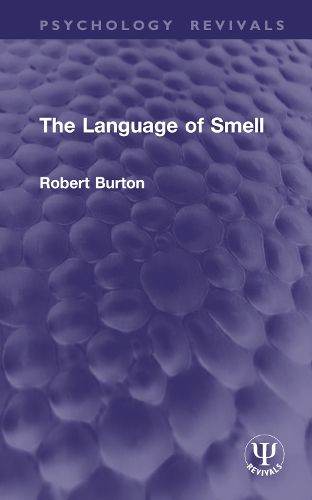Readings Newsletter
Become a Readings Member to make your shopping experience even easier.
Sign in or sign up for free!
You’re not far away from qualifying for FREE standard shipping within Australia
You’ve qualified for FREE standard shipping within Australia
The cart is loading…






The sense of smell is at least equally important to may animals as sight and hearing. This important fact had previously been largely overlooked and is the subject of this fascinating study of the animal kingdom, The Language of Smell, originally published in 1976.
Robert Burton, a zoologist and writer on wildlife, surveys the use of the sense of smell, from ants and butterflies, through birds, to whales and other mammals, and to human beings themselves. He describes the organs of smell and discusses the theories as to the way that odours are converted into nerve impulses. He considers the recent scientific advances in the field, including the observations on wild animals and laboratory experiments which show how smell is used for finding food, repelling enemies and for navigation. Many animals also use smell for communication. They produce special odours, called pheromones, that act as signals to members of their own species. Robert Burton shows how pheromones play a particularly important part in the social and sexual lives of insects and mammals, and that human beings also make more use of their sense of smell than had been thought.
Throughout the book illustrations and line drawings are used to clarify the descriptions of the vital and exciting 'language of smell'.
$9.00 standard shipping within Australia
FREE standard shipping within Australia for orders over $100.00
Express & International shipping calculated at checkout
The sense of smell is at least equally important to may animals as sight and hearing. This important fact had previously been largely overlooked and is the subject of this fascinating study of the animal kingdom, The Language of Smell, originally published in 1976.
Robert Burton, a zoologist and writer on wildlife, surveys the use of the sense of smell, from ants and butterflies, through birds, to whales and other mammals, and to human beings themselves. He describes the organs of smell and discusses the theories as to the way that odours are converted into nerve impulses. He considers the recent scientific advances in the field, including the observations on wild animals and laboratory experiments which show how smell is used for finding food, repelling enemies and for navigation. Many animals also use smell for communication. They produce special odours, called pheromones, that act as signals to members of their own species. Robert Burton shows how pheromones play a particularly important part in the social and sexual lives of insects and mammals, and that human beings also make more use of their sense of smell than had been thought.
Throughout the book illustrations and line drawings are used to clarify the descriptions of the vital and exciting 'language of smell'.